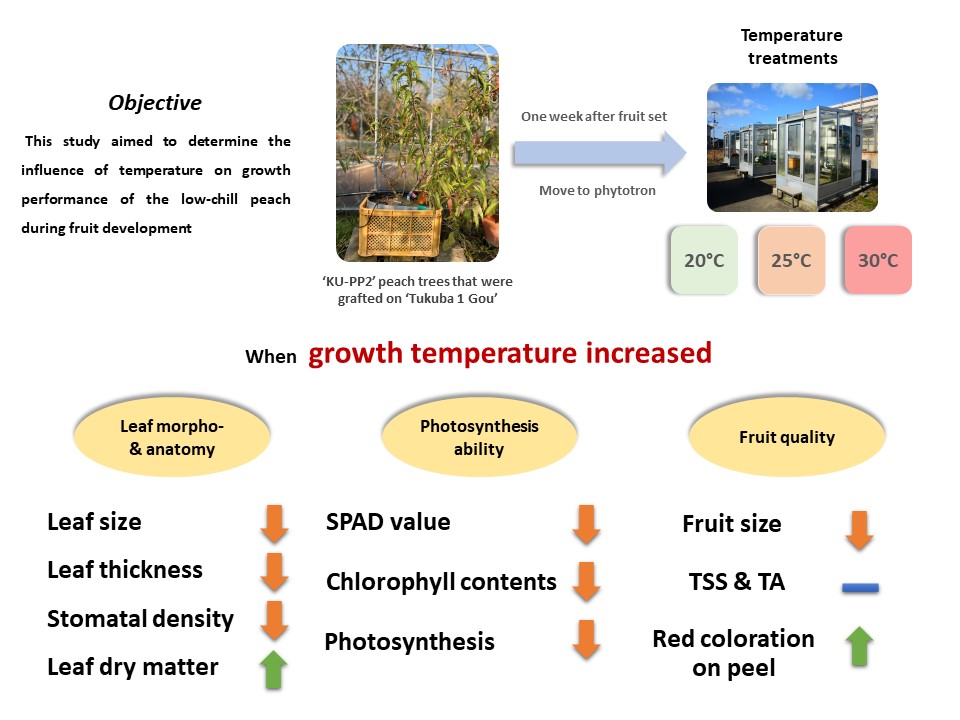Effect of growth temperature levels on photosynthetic ability and fruit quality of ‘KU-PP2’, a new low-chill peach cultivar

Published 2021-06-10
Keywords
- forcing culture,
- high temperature,
- protected culture,
- Prunus persica,
- stress response
How to Cite
Abstract
Temperature is a crucial factor in growing plants in a forcing system. Our goal was to introduce low-chill peach cultivars into a forcing culture for early-season peach production with high fruit quality. However, the effects of growth temperature on plant growth and fruit quality during fruit development of the ‘KU-PP2’ peach cultivar have not yet been evaluated. ‘KU-PP2’ trees were grown in containers and transferred to phytotrons after fruit set in April 2019. The air temperature was set at 20, 25, and 30°C until harvest. Photosynthetic ability, leaf characteristics, and fruit quality under each treatment were determined. Long exposure to lower growth temperatures did not cause a change in leaf characteristics or a reduction in photosynthetic ability and fruit quality in the ‘KU-PP2’ peach cultivar. In contrast, the 30°C was found to be associated with a decrease in leaf size and thickness, stomatal density, photosynthesis, chlorophyll content, and fruit size. Conversely, the high-temperature condition enhanced coloration of the fruit peel and hastened the harvesting period, compared with the lower-temperature treatments. These results indicated that long-term exposure to the moderately high temperature of 30°C negatively affected plant growth and fruit productivity through changed leaf characteristics and a disrupted photosynthesis.





